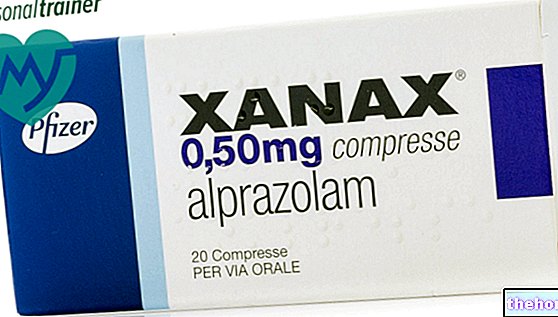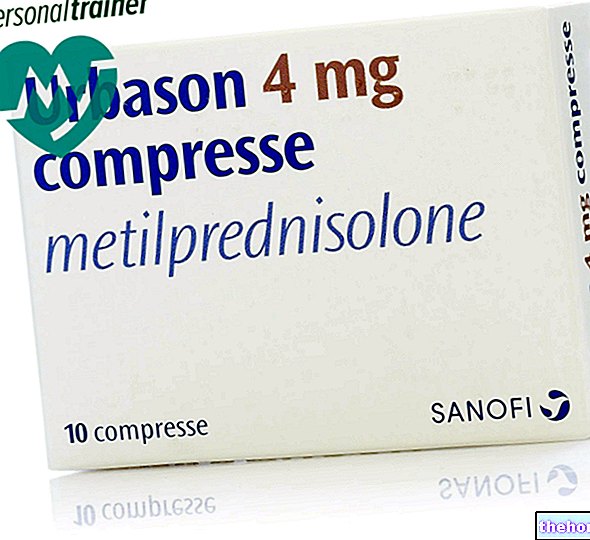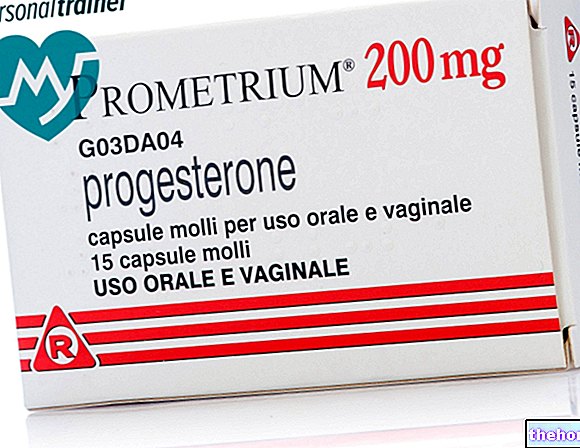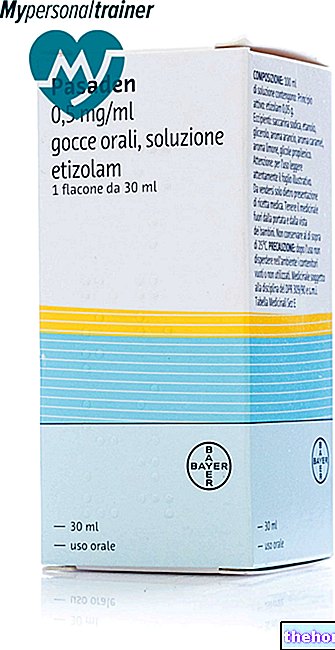Active ingredients: Alprostadil
Caverject 5 micrograms / ml POWDER AND SOLVENT FOR SOLUTION FOR INJECTION
Caverject 10 micrograms / ml POWDER AND SOLVENT FOR SOLUTION FOR INJECTION
Caverject 20 micrograms / ml POWDER AND SOLVENT FOR SOLUTION FOR INJECTION
Indications Why is Caverject used? What is it for?
PHARMACOTHERAPEUTIC CATEGORY
Drug for the treatment of alterations of the erective mechanism in male sexual impotence
THERAPEUTIC INSTRUCTIONS
Treatment of erectile dysfunction (difficulty in achieving and / or maintaining a satisfactory erection). Caverject is not intended for pediatric use (see Special Warnings).
Contraindications When Caverject should not be used
Patients with hypersensitivity to the active substance and / or to any of the excipients or patients with predisposing conditions to priapism, such as: patients with sickle cell anemia or carriers of sickle cell anemia, multiple myeloma or leukemia, or patients with anatomical malformations of the penis, such as angulation, fibrosis of the corpora cavernosa or Peyronie's disease Patients with penile implants should not be treated with Caverject.
Caverject should not be given to men for whom sexual activity is not recommended or contraindicated.
This medicine must not be given to premature babies or newborns (see Special Warnings).
Precautions for use What you need to know before taking Caverject
- Consult your doctor before undergoing treatment with Caverject.
- The underlying clinical causes of erectile dysfunction that can be treated should be diagnosed and treated before initiating therapy with Caverject.
- If you have any problems or concerns related to the use of Caverject, consult your doctor.
- It is known that the administration directly into the corpus cavernosum of substances that act on the blood vessels, including alprostadil, can cause the onset of prolonged erections and / or priapism. Therefore it must be reported to the doctor or, if not available, to seek medical assistance in any case of an erection that lasts for an excessive period of time (4 hours or more).
- Painful erections can occur more easily in patients with anatomical malformations of the penis (angulation, phimosis, cavernous fibrosis, Peyronie's disease, plaques). Therefore Caverject should not be used in these patients.
- Penile fibrosis, which includes angulation, corpora cavernosum fibrosis, fibrous nodules and Peyronie's disease, can occur after intracavernous administration of Caverject. The occurrence of fibrosis may increase with increasing duration of drug use.
- Regular medical check-ups, with careful examination of the penis, are advised to detect the onset of penile fibrosis or Peyronie's disease. Treatment with Caverject should be discontinued if penile angulation, corpora cavernosum fibrosis or Peyronie's disease develop.
- The use of Caverject does not provide protection against the transmission of sexual diseases, including acquired immunodeficiency syndrome (HIV infection). Injection of Caverject may result in small bleeding at the injection site. In patients with blood-borne disease, this can increase the risk of passing the disease to their partner.
- Patients being treated with anticoagulants, such as warfarin or heparin, may be more prone to bleeding after intracavernous injection. Caverject should be used with caution in patients with previous transient ischemic attacks or in those with unstable cardiovascular disorders. Caverject is not intended for concomitant administration with any other drugs for the treatment of erectile dysfunction (see also INTERACTIONS).
- The potential for abuse of Caverject should be kept in mind in patients with previous psychiatric disorders or drug dependence.
- Pacing and intercourse can cause cardiac and pulmonary effects in patients with coronary heart disease, congestive heart failure, or lung disease. During therapy with Caverject, these patients should exercise caution in having sexual intercourse.
- The reconstituted solutions of Caverject are intended for single use. The syringe and any unused contents must be disposed of properly.
- Caverject powder and solvent for solution for injection contains benzyl alcohol which may cause hypersensitivity reactions
Interactions Which drugs or foods can modify the effect of Caverject
Tell your doctor or pharmacist if you have recently taken any other medicines, even those without a prescription.
Caverject should not be mixed or given concomitantly with any other substance. When being treated with Caverject, discuss other medications (both prescription and self-medication) and alcohol with your doctor.
The effects of combinations of alprostadil with other drugs for the treatment of erectile dysfunction (eg sildenafil) or other drugs capable of inducing erection (eg papaverine) have not been formally studied. Such drugs should not be used in combination with alprostadil in consideration of the potential risk of inducing prolonged erections.
Sympathomimetic drugs may reduce the effect of alprostadil. Alprostadil may enhance the effects of antihypertensive drugs, vasodilators, anticoagulants and platelet aggregation inhibitors.
Warnings It is important to know that:
Patients treated with anticoagulant drugs (warfarin, heparin) are more prone to bleeding after intracavernous injection.
Important information about some of the ingredients:
Benzyl alcohol:
Caverject powder and solvent for solution for injection contains benzyl alcohol as a preservative. The use of benzyl alcohol has been associated with serious adverse reactions, including gasping syndrome and death in pediatric patients. The minimum amount of benzyl alcohol at which toxicity can occur is not known. The risk of benzyl alcohol toxicity depends on the quantity administered and the hepatic ability to eliminate the substance. In premature and underweight infants there may be a greater likelihood of developing toxicity.
Benzyl alcohol can cause toxic and allergic reactions in infants and children up to 3 years of age.
Sodium:
Caverject powder and solvent for solution for injection contains less than 1 mmol (23 mg) sodium per dose, ie it is essentially "sodium free".
Pregnancy and breastfeeding
Not relevant
Effects on ability to drive and use machines
Caverject does not affect the ability to drive or use machines
Dosage and method of use How to use Caverject: Dosage
Reconstitute the solution for injection using only the solvent provided.
Caverject is administered by direct intracavernous injection as described below.
Generally, the use of a 27-30 G x ½ "(12 mm) gauge needle is recommended.
Initial identification of the dose, to be made in the doctor's office
Follow the dosage schedule given below, depending on the erectile response, until the dosage is determined that causes an erection that is adequate to allow intercourse, but does not exceed the duration of 60 minutes. In case of non-response to the dose the next higher dose can be administered within 1 hour. If there is a response, an interval of at least 1 day must be observed before proceeding with the next administration. The patient should remain in the physician's office until complete detumescence.
The appropriate dose for each individual patient will be determined by the doctor. The patient should not inject larger or smaller volumes of Caverject than prescribed. If the erection achieved is unsatisfactory or lasts too short or too long, inform your doctor.
Do not change the prescribed dose yourself. Caverject should be administered approximately 5-10 minutes before sexual intercourse.
The generally recommended maximum frequency of administration is no more than one injection per day and no more than three times per week, with at least a 24-hour interval between each administration.
The first injections must be performed by medical personnel and only after appropriate training and instructions can Caverject be injected directly by the patient.
During self-administration treatment, it is recommended that the patient visit their doctor every 3 months.
The dose chosen for self-administration should produce a duration of erection not exceeding 1 hour, while allowing the patient to conduct normal sexual intercourse. Doses above 60 micrograms of alprostadil are not recommended.
METHOD OF ADMINISTRATION
1) It is suggested to use a 22 G x 1½ "(38 mm) gauge needle to reconstitute the solution.
2) Take the solvent from the vial and transfer it to the bottle
In the case of the pre-filled syringe:
a) rotate the upper part of the white seal of the syringe until the seal is broken;
b) Apply the longest needle from 22 G x 1½ "(38 mm) gauge and fix it by twisting on the neck of the syringe
c) remove the sheath from the needle and transfer the solvent directly into the bottle
Keeping the syringe inserted into the bottle cap, shake gently until the powder is completely dissolved.
3) Invert the bottle and withdraw the volume of Caverject indicated by the doctor
4) To perform the intracavernous injection, replace the needle with a shorter one, gauge 27-30 G x ½ "(12 mm).
5) Caverject must be injected into one of the two areas of the penis called the "corpus cavernosum". The corpora cavernosa are arranged along the penis, on both sides.
6) To ensure proper self-injection of Caverject, carefully follow the instructions below:
a) The injection should be given in an upright or slightly reclined position. Alternate the area with each injection (one side for one injection, the other side for the next). Within each area, the injection point must be changed each time;
b) grasp the head of the penis between the thumb and forefinger. Stretch the penis and keep it fixed against the thigh so that it does not slip out of the grip during the injection. In uncircumcised men, the foreskin must be retracted to allow proper injection placement;
c) avoiding putting your thumb on the syringe plunger and following the technique already adopted by the doctor, with continuous and firm movement, insert the needle into the injection point and at a 90 ° angle. Avoid visible blood vessels;
d) pressing on the plunger, inject the contents of the syringe with a slow and firm movement
e) remove the needle and squeezing both sides of the penis, press a cotton ball or a swab soaked in alcohol or disinfectant solution on the injection site for about 3 minutes.
If bleeding occurs, press until it stops.
Overdose What to do if you have taken too much Caverject
The most frequent effects resulting from an overdose with Caverject are prolonged erection (6 hours or more) and painful erection.
If such events occur, consult your doctor immediately.
In case of accidental ingestion / intake of an excessive dose of Caverject, notify your doctor immediately or go to the nearest hospital.
IF YOU ARE IN ANY DOUBT ABOUT THE USE OF Caverject, CONTACT YOUR DOCTOR OR PHARMACIST
Side Effects What are the side effects of Caverject
Like all medicines, Caverject can cause side effects, although not everybody gets them.
The most frequently reported side effect (30% of patients) was mild or moderate pain in the penis.
Penile fibrosis, including penile angulation, fibrous nodules, and Peyronie's disease, was reported in 3% of cases.
Less frequently (3%), hematomas occur at the injection site, however related to the injection technique rather than the effects of alprostadil.
Prolonged erections (defined as erections lasting 4-6 hours) have been reported rarely (4%) and priapism less frequently (0.4%). In the majority of cases, spontaneous detumescence occurred.
Adverse drug reactions that have been reported during clinical trials and post-marketing experience are listed in the table below, the frequencies are: very common (≥ 1/10); common (≥ 100,
Compliance with the instructions contained in the package leaflet reduces the risk of undesirable effects.
Reporting of side effects
If you get any side effects, talk to your doctor or pharmacist. This includes any possible side effects not listed in this leaflet. Undesirable effects can also be reported directly via the national reporting system at http://www.aifa.gov.it/content/segnalazioni-reazioni-avverse. By reporting side effects you can help provide more information on safety. of this medicine.
Expiry and Retention
WARNINGS
- The reconstituted bottle of Caverject is to be used for a single treatment at the prescribed dose. The residual quantity must not be used.
- After each injection, the unused contents of a syringe should not be returned to the original bottle of reconstituted solution.
Expiry: see the expiry date printed on the package.
The expiry date refers to the product in intact packaging, correctly stored.
Warning: do not use the medicine after the expiry date shown on the package. Store at a temperature not exceeding 25 ° C.
The reconstituted solution should be used immediately.
Medicines should not be disposed of via wastewater or household waste. Ask your pharmacist how to throw away medicines you no longer use. This will help protect the environment.
Keep this medicine out of the reach and sight of children.
COMPOSITION
a) Each bottle of 5 micrograms contains: alprostadil 6.15 micrograms. Excipients: lactose (anhydrous), sodium citrate (anhydrous), hydrochloric acid, sodium hydroxide.
Each 10 microgram bottle contains: 11.9 micrograms alprostadil. Excipients: lactose (anhydrous), sodium citrate (anhydrous), hydrochloric acid, sodium hydroxide.
Each 20 microgram bottle contains: 23.2 micrograms alprostadil. Excipients: lactose (anhydrous), sodium citrate (anhydrous), hydrochloric acid, sodium hydroxide.
b) Each vial and each pre-filled syringe of solvent contain: benzyl alcohol, water for injections.
c) After reconstitution and mixing 1 ml contains:
Caverject 5 micrograms / ml: alprostadil 5 micrograms. Excipients: lactose, sodium citrate, hydrochloric acid, sodium hydroxide, benzyl alcohol, water for injections.
Caverject 10 micrograms / ml: alprostadil 10 micrograms. Excipients: lactose, sodium citrate, hydrochloric acid, sodium hydroxide, benzyl alcohol, water for injections.
Caverject 20 micrograms / ml: alprostadil 20 micrograms. Excipients: lactose, sodium citrate, hydrochloric acid, sodium hydroxide, benzyl alcohol, water for injections.
PHARMACEUTICAL FORM AND CONTENT
Powder and solvent for solution for injection. It is available in the following packs:
Caverject 5 micrograms:
- 5 bottles of powder + 5 ampoules of 1 ml.
- 1 bottle of powder + 1 pre-filled syringe of 1 ml + 2 needles + 2 disinfectant swabs. C.
Caverject 10 micrograms:
- 5 bottles of powder + 5 ampoules of 1 ml.
- 1 bottle of powder + 1 pre-filled syringe of 1 ml + 2 needles + 2 disinfectant swabs.
Caverject 20 micrograms:
- 5 bottles of powder + 5 ampoules of 1 ml.
- 1 bottle of powder + 1 pre-filled syringe of 1 ml + 2 needles + 2 disinfectant swabs
Source Package Leaflet: AIFA (Italian Medicines Agency). Content published in January 2016. The information present may not be up-to-date.
To have access to the most up-to-date version, it is advisable to access the AIFA (Italian Medicines Agency) website. Disclaimer and useful information.
01.0 NAME OF THE MEDICINAL PRODUCT
CAVERJECT 10 mcg
02.0 QUALITATIVE AND QUANTITATIVE COMPOSITION
Each 0.5 ml cartridge delivers a maximum dose of 10 mcg of alprostadil.
For excipients, see Section 6.1.
03.0 PHARMACEUTICAL FORM
Powder and solvent for solution for injection.
Double chamber glass cartridge containing a white lyophilized powder and solvent for reconstitution.
04.0 CLINICAL INFORMATION
04.1 Therapeutic indications
Caverject is indicated for the symptomatic treatment of erectile dysfunction in adult males due to neurological, vascular, psychogenic or mixed etiology.
Caverject can be a useful complement to other diagnostic tests in diagnosing erectile dysfunction.
04.2 Posology and method of administration
No formal clinical studies have been conducted in patients under the age of 18 or over 75 years.
General informations
Caverject 10 mcg, powder and solvent, double chamber should be administered by direct intracavernous injection using the 29 G x ½ "(12 mm) gauge needle included in the package. The usual site of injection is along the dorsolateral aspect of the proximal third of the penis.
Avoid visible veins. Both the side of the penis and the injection site must be changed between each injection.
Initial injections of Caverject should be given by trained healthcare professionals and after proper preparation, alprostadil can be injected at home. It is recommended that patients be monitored regularly (e.g. every 3 months) especially in the initial stages of self-administration therapy when dose adjustments may be required.
The dose of Caverject should be identified for each patient by careful titration under medical supervision. The lowest effective dose that allows the patient to have a satisfactory erection for intercourse should be used. It is recommended that the administered dose results in an erection duration not exceeding one "hour. If the duration is longer, the dose should be Most patients achieve a satisfactory response with doses between 5 and 20 micrograms.
The delivery device is designed to deliver a single dose that can be set in increments of 25% of the nominal dose.
Usually doses above 40 micrograms of alprostadil are not justified. The following doses can be administered using Caverject 10 mcg, powder and solvent, double chamber: Pack
Caverject 10 mcg, powder and solvent, double chamber
Available dose 2.5; 5; 7.5; 10 mcg
A Treatment
The starting dose of alprostadil for erectile dysfunction of vascular, psychogenic or mixed aetiology is 2.5 mcg. The second dose should be 5 mcg if there is a partial response and 7.5 mcg if there is no response. Subsequent gradual increases of 5-10 mcg should be administered until an optimal dose is achieved. If there is no response to the administered dose, then the next higher dose can be given within one hour. If there is a response, there must be an interval of one day before the next dose is administered.
For patients with erectile dysfunction of neurological origin requiring doses below 2.5 mcg, the possibility of identifying the dose with Caverject should be considered. Injectable Powder. Starting with a dose of 1.25 mcg, if this does not cause any response the second dose should be 2.5 mcg. Apart from the initial dose, it is possible to establish the dose with Caverject 10 mcg, powder and solvent, double chamber or Caverject.
Injectable powder, in similar increments to those used in the treatment of non-neurological erectile dysfunction.
The maximum recommended frequency of injections is no more than once per day and three times per week.
B Integration to the etiological diagnosis
Subjects with no evidence of neurological dysfunction: 10-20 mcg of alprostadil to be injected into the corpora cavernosa and massaged through the penis. More than 80% of subjects can be expected to respond to a single dose of 20 micrograms of alprostadil.
Subjects with evidence of neurological dysfunction: These patients can be expected to respond to lower doses of alprostadil. In individuals with mild erectile dysfunction or erectile dysfunction caused by neurological disease / trauma, the diagnostic test dose should not exceed 10 mcg and a starting dose of 5 mcg is likely to be indicated.
Should an "erection following the injection of alprostadil persist for more than one" hour, detumescent therapy should be used before the subject leaves the clinic to prevent a risk of priapism (see Section 4.9 - Overdose). discharge from the hospital, the erection must have completely ceased and the penis must be in a completely flaccid state.
If there is no response to erection during the titration phase, patients should be monitored for the possible onset of systemic adverse reactions.
04.3 Contraindications
Caverject should not be used in patients with known hypersensitivity to alprostadil or to any of the excipients; in patients who have conditions that could predispose them to priapism, for example sickle cell anemia, multiple myeloma or leukemia; or in patients with anatomical deformation of the penis, such as angulation, cavernous fibrosis, phimosis or Peyronie's disease. Patients with penile implants should not be treated with Caverject.
Caverject should not be used in men for whom sexual activity is inadvisable or contraindicated (eg, patients with severe heart disease).
04.4 Special warnings and appropriate precautions for use
Prolonged erection and / or priapism may occur. The patient should be asked to report any case of an erection that lasts a long period of time, such as 4 hours or more, to their doctor. Treatment of priapism should not be delayed for more than 6 hours (see Section 4.9 - Overdose).
A painful "erection is more likely to occur in patients with anatomical deformation of the penis, such as angulation, phimosis, cavernous fibrosis, Peyronie's disease, or plaques. Penile fibrosis, which includes angulation, fibrous nodules, and Peyronie's disease, can occur after intracavernous administration of Caverject. The appearance of fibrosis may increase with increasing duration of use of the drug. It is strongly recommended that patients be followed up regularly, carefully examining the penis, for signs of penile fibrosis or Peyronie's disease Treatment with Caverject should be discontinued in patients who develop penile angulation, cavernous fibrosis or Peyronie's disease.
Patients treated with anticoagulants, such as warfarin or heparin, may have an increased propensity for bleeding after intracavernous injection.
In some patients, the injection of Caverject may induce a small bleeding at the injection site. In patients with blood-borne diseases, this could increase the risk of passing the disease to their partner.
Caverject should be used with caution in patients with a history of transient ischemic attacks or in those with unstable cardiovascular disorders.
Caverject is not intended for concomitant administration with any other drugs that are used for the treatment of erectile dysfunction (see also 4.5 - Interaction with other drugs and other forms of interaction).
The potential for abuse of Caverject should be kept in mind in patients with a history of psychiatric disorders or drug dependence.
Pacing and intercourse can cause cardiac and pulmonary effects in patients with coronary heart disease, congestive heart failure, or lung disease.
Caverject should be used with caution in such patients.
The reconstituted solutions of Caverject are intended for single use.
Discard any unused contents of the syringe.
04.5 Interactions with other medicinal products and other forms of interaction
There are no known interactions.
Sympathomimetic drugs can reduce the effect of alprostadil.
Alprostadil may enhance the effects of antihypertensive drugs, vasodilators, anticoagulants and platelet aggregation inhibitors.
The effects of combinations of alprostadil with other drugs for the treatment of erectile dysfunction (eg sildenafil) or other drugs capable of inducing erection (eg papaverine) have not been formally studied. Such drugs should not be used in combination. with alprostadil in consideration of the potential risk of inducing prolonged erections.
04.6 Pregnancy and lactation
It does not apply.
04.7 Effects on ability to drive and use machines
It does not apply.
04.8 Undesirable effects
The most frequent adverse reaction after intracavernous administration was pain in the penis. 30% of patients reported pain at least once.
Pain was associated with 11% of the injections administered. In most cases, pain was rated as mild or moderate.
3% of patients discontinued treatment due to pain.
Penile fibrosis, including penile angulation, fibrous nodules and Peyronie's disease, was reported in 3% of all patients participating in clinical trials. In a self-administered study in which duration of use was up to 18 months, the incidence of penile fibrosis was higher, about 8%.
Hematomas and bruising at the injection site, which are related to the injection technique rather than the effects of alprostadil, occurred in 3% and 2% of patients, respectively.
A prolonged erection (defined as an erection lasting 4 to 6 hours) was reported in 4% of patients. Priapism (painful erection lasting six hours or more) occurred in 0.4%. In the majority of cases, spontaneous detumescence occurred.
Adverse drug reactions that have been reported from clinical trials and from post-marketing experience are listed in the table below:
Heart ailments:
Uncommon: supraventricular ectopic beats
Ophthalmological disorders:
Uncommon: mydriasis
Gastrointestinal disorders:
Uncommon: nausea, dry mouth
General and injection site disorders:
Common: hematoma; bruising
Uncommon: hematoma; hemorrhage; itch; inflammation; irritation;
swelling; edema; numbness and sensitivity at the injection site; sensation of heat in the penis; venous bleeding; asthenia.
Exams:
Uncommon: urethral haemorrhage; hematuria; decrease in blood pressure; increases in heart rate; elevated blood creatinine values.
Disorders of the musculoskeletal system, connective tissue and: bone:
Common: connective tissue disorders (including penile fibrosis, angulation and fibrous nodules)
Uncommon: leg cramps.
Infections and infestations:
Uncommon: fungal infections; cold symptoms.
Disorders of the nervous system:
Uncommon: vasovagal reactions; hypoesthesia
Renal and urinary disorders:
Uncommon>: impaired urination; increased urinary frequency; urinary urgency.
Disorders of the reproductive system and breasts:
Very common: pain in the penis
Common: prolonged erection; Peyronie's disease.
Uncommon: balanitis; priapism; phimosis; painful erection; abnormal ejaculation; pain in the testicles, scrotum and pelvic region; edema of the testicles and scrotum; spermatocele; testicular disorders.
Disorders of the skin and subcutaneous tissue:
Uncommon: rash; local itching and irritation; erythema of the scrotum; diaphoresis; thickening in the testicles.
Vascular disorders:
Uncommon: symptomatic hypotension; hypotension, vasodilation; peripheral vascular disorders.
Very common (≥ 1/10)
Common (≥1 / 100,
Uncommon (≥ 1/1000,
Benzyl alcohol can cause hypersensitivity reactions.
04.9 Overdose
In clinical studies performed with alprostadil no cases of overdose were observed.If an overdose of Caverject, administered intracavernosally, occurs, the patient should be placed under medical supervision until the systemic effects have resolved or until detumescence of the penis has occurred. Symptomatic treatment of any systemic symptoms is appropriate.
Treatment of priapism (prolonged erection) should not be delayed beyond 6 hours. Initial therapy should be performed by penile aspiration. Using aseptic technique, insert a 19-21 G butterfly needle into the corpus cavernosum and aspirate 20-50 ml of blood, which can cause detumescence of the penis. If necessary, the procedure can be repeated on the opposite side of the penis until a total maximum of 100ml of blood has been aspirated. If this maneuver proves insufficient, intracavernous injection of an alpha-adrenergic drug is recommended. Although the usual contraindications to intrapenic administration of a vasoconstrictor do not apply to the treatment of priapism, caution is advised when performing this operation. blood pressure and heart rate should be monitored continuously during the procedure. Extreme caution is required in patients with coronary heart disease, uncontrolled hypertension, cerebral ischaemia and in individuals taking monoamine oxidase inhibitors (anti-MAO). In the latter case, measures must be available to treat a hypertensive crisis. Prepare a phenylephrine solution at a concentration of 200 mcg / ml and inject 0.5 to 1.0 ml of the solution every 5-10 minutes. Alternatively. , use a 20 mcg / ml solution of adrenaline. If necessary, this can be followed by a further aspiration of blood through the same butterfly needle. The maximum dose of phenylephrine should be 1mg while that of adrenaline should be 100mcg (5ml of the solution). As an alternative, metaraminol can be used, but it should be borne in mind that life-threatening hypertensive crises have been reported. If even this measure fails to resolve the priapism, the patient should be urgently referred to the surgeon for further treatment which, if required, may include shunt surgery.
05.0 PHARMACOLOGICAL PROPERTIES
05.1 Pharmacodynamic properties
Pharmacotherapeutic group: drugs used in erectile dysfunction
ATC code: G04B E01
Alprostadil is the natural form of prostaglandin E1 (PGE1). Alprostadil has a widely diversified pharmacological profile; some of its most important effects are: vasodilation and inhibition of platelet aggregation. In most of the animal species examined alprostadil caused relaxation of the retractor muscle of the penis and of the corpus cavernosum of the urethra in vitro. Alprostadil also caused the relaxation of isolated preparations of the human corpus cavernosum and spongiosum as well as of the cavernous arterial segments contracted by phenylephrine or PGF2á in vitro. In "pigtail" monkeys (Macaca nemestrina), alprostadil increased cavernous arterial blood supply in vivo. The degree and duration of cavernous smooth muscle relaxation in this animal model were dose-dependent. Alprostadil induces erection by relaxing the trabecular smooth muscle and by dilating the cavernous arteries, which causes the expansion of the lacunar spaces and the entrapment of blood by compressing the venules against the tunica albuginea, a process which is called the "veno- body occlusive ". Generally, erection occurs 5-15 minutes after injection. Its duration depends on the dose.
05.2 Pharmacokinetic properties
Caverject 10 mcg, powder and solvent, double chamber contains alprostadil as the active ingredient in a complex with alfadex.
Upon reconstitution, the complex immediately dissociates into alprostadil and alfadex.
Therefore, the pharmacokinetics of alprostadil in Caverject 10 mcg, powder and solvent, double chamber is unchanged compared to Caverject. Injectable powder.
ADME
Absorption: For the treatment of erectile dysfunction, alprostadil is given by injection into the corpora cavernosa.
Distribution: After intracavernous injection of 20 micrograms of alprostadil, mean plasma concentrations of alprostadil increased 22-fold from baseline endogenous levels approximately 5 minutes after injection. Alprostadil concentrations returned to endogenous levels within 2 hours after injection. In plasma, alprostadil binds primarily to albumin (81% bound) and to a lesser extent to the IV-4 fraction of alpha-globulin (55% bound). No significant binding to erythrocytes was observed. or blood leukocytes.
Metabolism: alprostadil is rapidly converted to compounds which are further metabolised prior to excretion. After intravenous administration, approximately 80% of circulating alprostadil is metabolised in 1 pass through the lungs, mainly by beta- and omega-oxidation.
Therefore alprostadil which enters the systemic circulation after intracavernous injection is rapidly metabolised. The main metabolites of alprostadil are: 15-keto-PGE1, 15-keto-13,14-dihydro-PGE1 and 13,14-dihydro-PGE1 . In contrast to 15-keto-PGE1 and 15-keto-13,14-dihydro-PGE1, which are almost completely devoid of biological activity, 13,14-dihydro-PGE1 has been shown to lower blood pressure and inhibit blood pressure. "Platelet aggregation. Plasma concentrations of the major circulating metabolite (15-keto-13,14-dihydro-PGE1) increased 34-fold from endogenous baseline levels 10 minutes after injection and returned to baseline levels 2 hours after injection. Plasma concentrations of 13,14-dihydro-PGE1 increased 7-fold 20 minutes after injection.
Elimination: The metabolites of alprostadil are excreted primarily via the kidney with nearly 90% of the intravenous dose excreted in the urine within 24 hours. The remainder of the dose is excreted in the faeces.
There is no evidence of tissue retention of alprostadil or its metabolites after intravenous administration. In healthy volunteers, 70-90% of alprostadil was extensively extracted and metabolised in a single passage through the lungs resulting in a short elimination half-life of less than one minute.
Pharmacokinetics in sub-populations
Effect of renal or hepatic alteration: Pulmonary first pass metabolism is the major factor affecting the systemic elimination of alprostadil. Although the pharmacokinetics of alprostadil have not been formally examined in patients with renal or hepatic insufficiency, changes in renal or hepatic function should not be expected to have a major influence on the pharmacokinetics of alprostadil.
05.3 Preclinical safety data
Preclinical effects were observed only at exposures considered sufficiently in excess of the maximum human exposure, indicating little relevance to clinical use.
Alprostadil administered subcutaneously at doses up to 0.2 mg / kg / day had no adverse effects on reproductive function in male rats.
A standard battery of genotoxicity studies did not reveal any mutagenic potential of alprostadil or alprostadil / alfadex.
06.0 PHARMACEUTICAL INFORMATION
06.1 Excipients
Caverject double chamber
Powder: lactose monohydrate; sodium citrate dihydrate; alfadex; hydrochloric acid; sodium hydroxide.
Solvent: benzyl alcohol; water for injections.
06.2 Incompatibility
Not relevant.
06.3 Period of validity
Shelf life of the medicinal product as packaged for sale: 36 months.
Shelf life of the medicinal product after reconstitution
Chemical and physical in-use stability has been demonstrated for 24 hours at 25 ° C.
06.4 Special precautions for storage
No special storage precautions.
06.5 Nature of the immediate packaging and contents of the package
Two clear, Type 1, Farm borosilicate glass cartridges. Eur., Divided into two compartments and sealed with a bromobutyl rubber piston. The cartridge is sealed with an aluminum cap containing a bromobutyl rubber disc.
Two 29G injection needles.
Two cleaning swabs containing isopropyl alcohol.
06.6 Instructions for use and handling
Instructions for Use
To reconstitute, attach the needle to the device by pressing the needle onto the tip of the device and turning clockwise until it stops.
Remove the outer protective cap from the needle.
Turn the white plunger clockwise until it stops to reconstitute the alprostadil powder.
Invert the device twice to make sure the solution is mixed evenly. The solution must be clear. Carefully remove the inner protective cap from the needle. Keeping the device straight, press the plunger as far as possible. A few drops will appear on the tip of the needle.
Turn the end of the plunger clockwise to select the desired dose.
The package leaflet provides complete instructions on reconstitution, injection site cleansing and how to inject.
07.0 MARKETING AUTHORIZATION HOLDER
Pharmacia Italia S.p.A., Milan
08.0 MARKETING AUTHORIZATION NUMBER
Caverject 10 mcg, powder and solvent, double chamber, 2 cartridges, AIC n. 029561139 / M
09.0 DATE OF FIRST AUTHORIZATION OR RENEWAL OF THE AUTHORIZATION
01/01/2002
10.0 DATE OF REVISION OF THE TEXT
14/04/2005




























